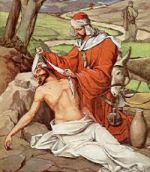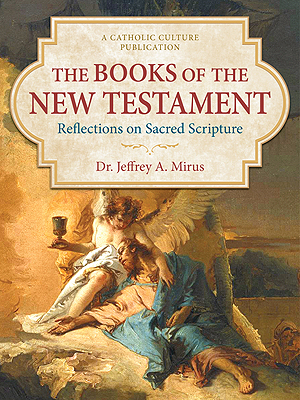The Father William Most Collection
Luther on Our Lady
[Published electronically for use in classes taught by Fr. Most and for private theological study.]
(First three items have been checked in original sources, not the others).
1. Commentary on the Hail Mary (Luther's Works, American edition, vol. 43, p. 40, ed. H. Lehmann, Fortress,1968): "... she is full of grace, proclaimed to be entirely without sin.... God's grace fills her with everything good and makes her devoid of all evil.... God is with her, meaning that all she did or left undone is divine and the action of God in her. Moreover, God guarded and protected her from all that might be hurtful to her."
2. Sermon on John 14.16: Luther's Works (Luther's Works, St. Louis, ed. Jaroslav Pelican, Concordia. vol. 24. p. 107: "... she is rightly called not only the mother of the man, but also the Mother of God.... it is certain that Mary is the Mother of the real and true God."
3.On the Gospel of St. John (ibid., vol. 22. p. 23, ed. Jaroslav Pelican, Concordia,1957): "Christ our Savior was the real and natural fruit of Mary's virginal womb.... This was without the cooperation of a man, and she remained a virgin after that."
***
1. Commentary on the Magnificat: "Men have crowded all her glory into a single phrase: The Mother of God. No one can say anything greater of her, though he had as many tongues as there are leaves on the trees."
2. Wm. J. Cole, "Was Luther a Devotee of Mary?" in Marian Studies 1970, p. 116: "...in the resolutions of the 95 theses Luther rejects every blasphemy against the Virgin, and thinks that one should ask for pardon for any evil said or thought against her."
3. David F. Wright, Chosen by God:Mary inEvangelical Perspecive (London: Marshall Pickering,1989, p.178: "In Luther's Explanation of the Magnificat in 1521, he begins and ends with an invocation to Mary, which Wright feels compelled to call 'surprising'". (Cited from Faith & Reason, Spring 1994, p. 6.
4. P. Stravinskas in Faith & Reason, Spring,1994, p. 8: "Most interesting of all, perhaps, is the realization that his burial chamber in the Wittenberg church, on whose door he had posted his 95 Theses, was adorned with the 1521 Peter Vischer sculpture of the Coronation of the Virgin, with the inscription containing these lines:
'Ad summum Regina thronum defertur in altum:
Angelicis praelata choris,cui festus et ipse
Filius occurrens Matrem super aethera ponit.'"






